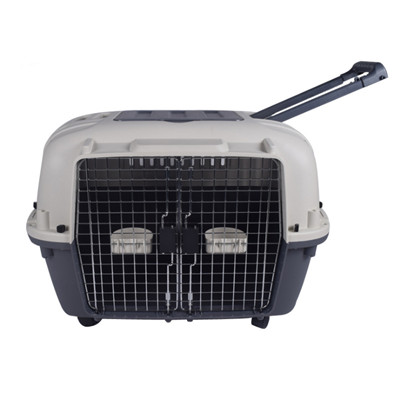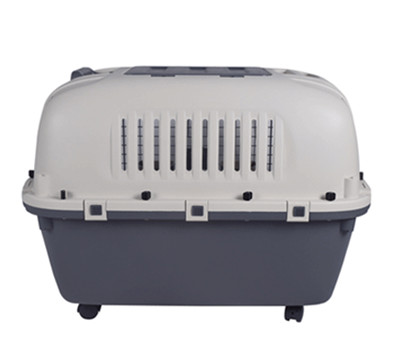Safe Travels
Retailers need to arm customers with the information, resources and products they need to travel safely and conveniently with pet birds.
Traveling, while often pleasurable, can be stressful. Traveling with a pet bird can add another layer of complexity to the trip. In order to travel safely and effortlessly with a pet bird, pet owners need to be armed with the information and tools necessary to avoid hassles and keep their pets healthy and happy. Retailers can be essential in helping customers make important preparations before they embark.
Before traveling with birds, pet owners should first ask themselves if it is wise to take the bird along. If they are moving to a new house, traveling for an extended length of time or have a larger parrot that does poorly when left behind, then the owner ought to bring their bird on their travels. But if it is not a good idea to bring the bird on the trip, the pet owner should consider boarding it at a facility or at the pet store where the bird was bought, if that is an option. Another option is to hire a pet sitter, so the bird can stay at home.
If a pet bird must travel with the owner, preparations will be determined first by whether the pet will be traveling by car or plane. Pet owners who are traveling by plane or crossing state lines in a vehicle need to obtain a veterinary health certificate 10 days or less before the trip. This is a law, although it is not always enforced, especially when traveling by road. Owners must check—and double check—state laws before traveling with their feathered friends, since some states prohibit the entry of certain pets. For example, some states that ban the ownership of Quaker parrots even prohibit people from traveling through with these birds.
Air-bound travelers also need to check with their airlines, which may have differing rules and regulations concerning pets.
If traveling by air, the bird owner needs to make a reservation with an airline for traveling with their pet as soon as possible. Note that some airlines do not take any pets, and some will accept only dogs and cats. Airlines that take birds may have restrictions on which species and how many can be brought on board, and all have rules on how many passengers can take a pet on the same flight. A pet owner who is traveling with a bird that is too big to fit in an under-seat carrier will also need to know if the bird will have to travel in cargo or if it can be bought its own seat.
Make sure to also check any restrictions on temperature, as some airlines will not ship or let animals be taken if the destination they are traveling from or going to is too hot or cold. Also, show up at least two or more hours before the flight.
Airlines require the use of an airline-approved pet carrier, whether the bird will be traveling in the cabin or cargo hold.
If traveling by vehicle, the bird’s own cage may be used, if it is not too large and can be made safe for travel. Otherwise, it may be best to go with a sturdy pet crate. If a pet will be traveling in a new carrier, it should be made familiar with the carrier at least three or four weeks before travel. Tame parrots can be placed in it with favorite treats and toys for a few minutes at a time to become accustomed to being in the carrier. This will help keep stress to a minimum when traveling.
The carrier or cage must be travel-ready by having a very sturdy rope or rough wood perch placed near the bottom. Dishes should also be attached securely to the bottom of the carrier or cage. Some floor toys can be put in for larger parrots, but no toys should be hung where they can swing around and hurt the bird. Nothing that can move around easily should be placed in any container for a pet traveling by air or land.
The size of the carrier depends on the bird and how it is traveling. Small birds can go in pet crates that fit under the seat of the airline if the owner wants their bird or birds to travel with them in the cabin. Larger parrots will need to be in big enough containers that they can stand up easily and turn around comfortably, so they may have to travel in cargo or have a seat bought for them if the airline allows it. If traveling by car, keep the carrier or cage buckled into the back seat, and never take the bird out when on the road.


The strength of the carrier must also be taken into consideration with larger parrots. These birds have extremely strong bills and can easily chew through many types of plastic, so it is important to be sure the container can withstand this chewing. In most cases, this means the carrier will need to be wire reinforced. Note, however, that airlines will not allow an all-wire cage to be used for pet travel in the cabin or cargo area.
Also, be sure the closing mechanism works well and cannot be undone by an intelligent parrot. Locks are not allowed on carriers for air travel, so use heavy-duty clips as needed.
When traveling by air, an owner should place large “live animal” stickers on the top and side of the bird’s carrier, as well as labels with the owner’s name and contact information, including where they are staying while away. It is best not to put anything in the bottom of the carrier when traveling by plane nowadays, or use something that can be pulled out easily to be checked at security, like white paper towels or black and white newspaper.
Pet owners should always opt for direct flights when traveling with a bird, especially if it has to go into cargo and cannot be carried on by the owner. If the owner finds that they have to ship their pet bird separately, there are airline-approved shipping companies that deal with animal transportation regularly.
Smart Grooming
Clip the nails before travel so they are less likely to get caught on anything and begin to bleed. Clipping a bird’s wings, even if they are not normally clipped, can also save a lot of hassle and heartache. If a bird gets loose outside, the chances of getting it back are low when at home and almost impossible when traveling. With all the airline travel restrictions, bird owners may be required to take their pets out of the carrier at security to put the container through the X-ray—and a flying bird in an airport is not a good idea. As an alterative, the owner can ask security personnel to wand scan the pet and carrier, but it’s always best to be as cooperative as possible.
Basic Necessities
A first-aid kit is an absolute necessity for travel with birds. It should include a large towel or blanket for covering the cage or carrier as needed—although always leave some openings for air circulation and light. Pet owners can also use a towel or blanket to gently wrap up an injured bird when bringing it to a vet.
Paper towels and water are good for cleanup, although passengers can only take a liquid on a plane when it is in a three-ounce bottle or less, and the bottles must all fit in a quart-sized plastic closable bag. Styptic powder is a given in a first-aid kit, as it can stop bleeding from a broken nail, beak or new feather.
Pet owners should also bring extra food and treats, and if traveling by vehicle, they should bring the bird’s usual drinking water in a bottle. If traveling by plane and the bird’s usual drinking water is not available, use high-quality bottled water or filtered water, and avoid any tap water before, during or after the flight.
A very small amount of water can be put in a taller dish in a carrier, but it is best to use a water bottle—although the birds have to be used to getting their water from a bottle long before they must rely on it when traveling. Owners can give their birds fruit such as melon or grapes, which contain a lot of water, but again, the birds must be used to eating those particular foods. For some birds, it can take a month or more to get them to even try a new food, so the owner needs to be sure their bird is eating the fruit and/or using a water bottle long before the trip.
Traveling without pets can be a stressful experience, and anyone that has had to deal with all the new airline regulations can tell you how frustrating it can be. Now add a pet into the travel mix, and it can seem overwhelming to pet owners. As with anything in life, preparation is key. Double and triple check what is needed to travel with a bird. Being prepared will help the owner feel less stressed which will only keep the bird calmer during its’ travels.
Robyn Bright has a master’s degree in parrot biology and more than 35 years of pet retailing experience.




 4
4
